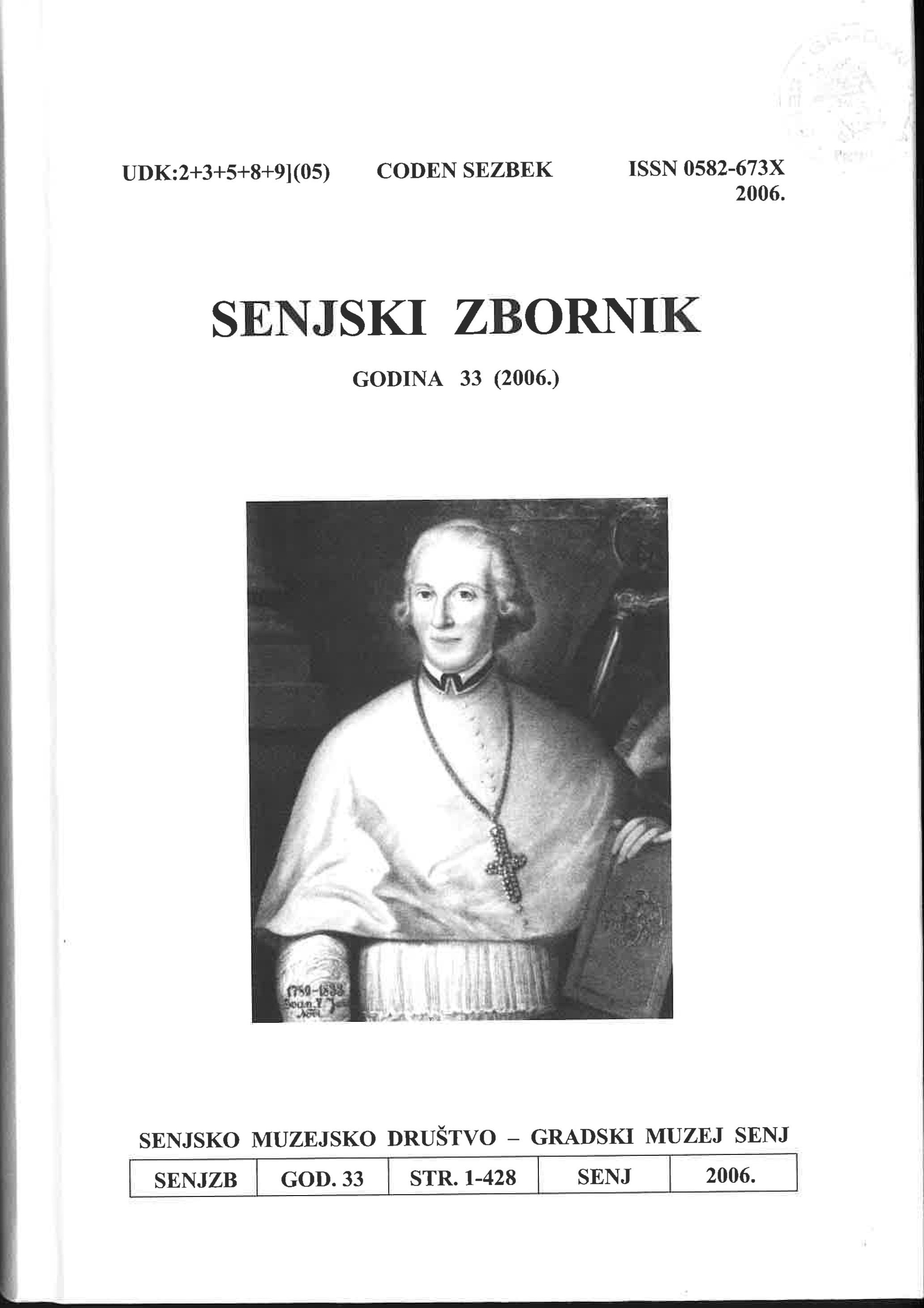Barokni oltari i druga kamena oprema katedrale Uznesenja Blažene Djevice Marije u Senju
Baroque Altar and other Stone Equipment of the Cathedral of Assumption of Virgin Mary in Senj
Author(s): Juraj LokmerSubject(s): Architecture, History of Church(es), Visual Arts, 17th Century, 18th Century, 19th Century, History of Art
Published by: Senjsko muzejsko društvo i Gradski muzej Senj
Keywords: Senj; Cathedral; baroque oltar; Antonio Michelazzi;
Summary/Abstract: After the Madrid Peace Treaty in 1617 the social and church situation in Senj gradually settled down. A new church organisation was created: the bishopric of Senj and Modruš were unified through the position of the bishop of Senj. After the liberation from the Turks in Lika, this region became part of the Senj and Modruš bishop jurisdiction. Senj became a port with a wide hinterland all the way to Bihać and beyond. The patricians were occupied with trade and maritime affairs and soon became rich. Bishops were mostly coming from the developed parts of Croatia and intended to renew, expand as much as possible the decorated cathedral. Especially in the 18th Bishops Ivan Antun de Benzoni and Juraj Vuk Ćolić expanded and decorated the cathedral with stone altars in collaboration with Senj’s patricians and canons. They also erected the pulpit, organised choirs and purchased new organs, liturgy equipment and tools as well as clothes. The cathedral received a saint’s body from Roman catacombs. This decoration continued until the mid of the 19th century. With its equipment, although a large part of this was ruined or damaged during WWII, the cathedral became the greatest Baroque monument in Senj, as well as in the area between Rijeka and Zadar. The majority of the stone inventory was made in the Rijeka workshop of Antonio Michelazzi whose work can be recognised despite a lack of archival documentation, by its stylistic expression and by comparsion with other famous works from his workshop. This all contributes to the connection between Senj and Rijeka as well as the opening of Senj towards European art tendencies of the era which arrived to this town via Rijeka. This was the golden age of Senj’s new history.
Journal: Senjski zbornik - prilozi za geografiju, etnologiju, gospodarstvo, povijest i kulturu
- Issue Year: 33/2006
- Issue No: 1
- Page Range: 133-192
- Page Count: 60
- Language: Croatian

